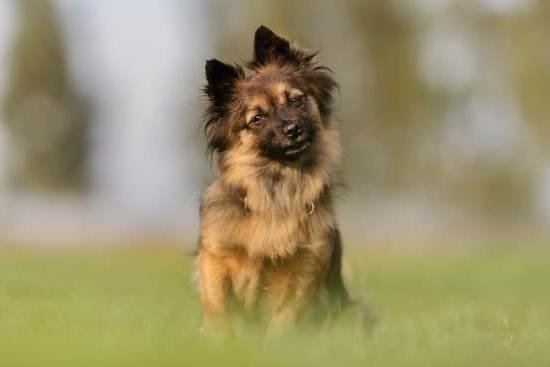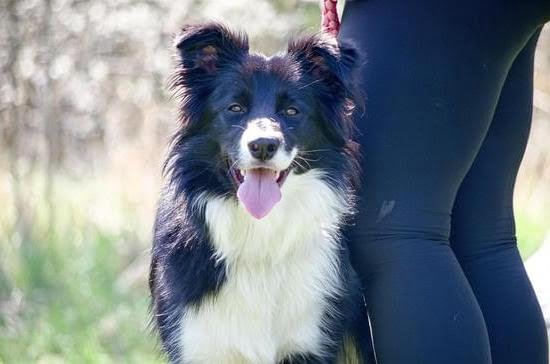Introduction
Cycling is a great way to get in shape and enjoy the outdoors. It’s also a great way to bond with your dog and teach them obedience. Training your dog to run alongside a bicycle has its own unique challenges, but can be one of the most enjoyable experiences for you and your pup. Not only does it provide quality bonding time together, but it also gives your pooch valuable exercise and helps them stay healthy and fit. Plus, running alongside you on a bike will help make walks with your pup more fun as well!
The first step in teaching your dog to run alongside you while cycling is to get your pup accustomed to riding in the vehicle that carries you – usually a car or van- before associating them with the bike itself. Take some time before introducing the bike to become familiar with each other when you are moving at normal speeds, so that they will be comfortable with the faster speeds later on. When ready, start the process by walking along side your pup while carrying their leash in one hand while pushing the bike with another. Let them sniff around as they follow you and reward them whenever they remain close to you (and show signs of excitement). This will help establish good habits from early on as they work toward learning how to run alongside a bicycle.
Once comfortable walking beside a moving bicycle, start introducing short jogs on flat grounds for about five minutes at a time or less (whichever works best for each trip). Each trip should end with lots of rewards like treats or verbal affirmation in order for them better associate cycling with positive experiences and encourage further participation. Eventually, increase their stamina on flat terrain by extending their current comfort level and incorporating brisk walking sessions into the routine.
If all goes well, incorporating one of these routines into regular trips can soon lead to longer runs which will still require lots of patience (and breaks) as your pup learns how to pace themselves while running beside you during more demanding rides such as uphills or cross country tracks. Having an additional set of wheels like inline skates also pairs very well with cycling if available – just make sure they have enough padding around their neck, back and sides so not squish all their fur away! And remember – safety always comes first – use caution especially when running over rough terrain since it could cause fatigue or muscle strain leading even fatal injury both dogs popes alike so please take steps prevention ensure everyone remains happy at all times!
Preparation
Preparing to ride with your pup requires supplies, gear and medical check-up. If your pet is not already familiar with biking start by getting them comfortable on a harness or dog bike trailer. Ensure the length of rope allows for no tension when running alongside your bike. Bring plenty of treats to reward them once you gain enough speed for them to follow you. The first step to preparing your pet for their biking debut is also the most important one: A visit to the veterinarian. Ask your vet if biking is okay for your dog before training them in any way as certain breeds should never be used as running partners when sports such as cycling are involved. Once you get the all clear from the vet, invest in an ID tag and waterproof collar that will ensure that your furry friend can always be identified both whilst training and also when out on rides.
Choosing the Right Bike and Equipment for Your Dog
When it comes to training your dog to run alongside your bike, the right bike and equipment can make all the difference. First, consider the size and weight of your bike. If you have a heavier bike, your dog may not be able to keep up with you. Make sure you also consider your dog’s size and strength when selecting a suitable bike. For example, if you have a large, strong dog like a German Shepherd, then they might be able to handle a full-sized mountain or road bike. Smaller breeds may need something more lightweight or even an electric or folding bike that won’t be too difficult for them to manage.
In addition to the right bike, there are also several accessories that can help keep both you and your pup safe on the trail. A properly fitted leash is essential as it provides extra control over your pup while also allowing them freedom of movement. You may also want to consider investing in picks (poop bags) for cleaning up after your pup during transportation as well as protective gear such as a reflective vest for increased visibility during night rides. Finally, don’t forget treats! Treats can be used throughout training sessions as rewards so make sure you keep plenty on hand!
Preparing Your Dog for the Exercise
Before attempting to have your dog run alongside your bike, there are several important steps you should take in order to ensure that your pup is prepared for the activity. First, make sure that you choose a breed that is suited for exercising at these speeds. Certain breeds such as German Shepherds and Border Collies have been bred for activities like running and biking, making them ideal for this type of training exercise. In addition, check with your veterinarian to make sure that your dog is healthy enough and has all the necessary vaccinations before beginning this activity. Be sure to slowly introduce the exercise to them using treats and positive reinforcement so they become accustomed to it. Make sure they are at least one year old so their bones can support the impact of running on cement or other surfaces. Finally, outfitting them with reflective material, a whistle, water bowl, and first aid kit if possible can help keep your pup safe while engaging in the exercise.
Establishing Detailed Training Guidelines
Creating an efficient training plan when teaching your dog to ride alongside your bike is essential. The goal should be a consistent, safe and enjoyable experience for both dog and rider. Before starting any training, make sure that both you and your pup are healthy and able to run without injury. You should also take caution to identify any hazards unique to the area where you plan to practice, such as traffic along the route or the presence of other dogs.
Once physical preparations have been taken care of, it’s now time to establish detailed training guidelines in order to get you safely riding with your pup! Depending on skill level, start by practicing in a safer area where traffic is minimal such as a fenced-in park or an enclosed neighborhood away from main thoroughfares. Start with basic commands like “sit” and “stay”, making sure your pup won’t wander off during practice sessions. Additionally, get your pup used to being around the bike itself so they don’t get scared when a few feet away from you while riding. Slowly increase distances as they gain confidence in their needed skills like most likely needing them to pay attention while passing by strangers or other animals. Lastly, always reward good behaviour with lots of praise and treats when setting goals together! With patience and dedication over time, eventually your pup will be ready for some longer rides—it’s exciting but make sure that both of you are properly prepared before heading out together on long journeys!
Pre-Ride Strategies to Avoid Distractions
Before you begin training your dog to run alongside your bike, it is important to have some pre-ride strategies to avoid distractions that could cause you or your dog to stray off course while cycling. Make sure that your dog has been given plenty of exercise before your training session so they’re not looking to run around and explore instead of running along with the bike. Bring treats or a favorite toy as a way to reward your dog when they obey commands given while biking. You should also consider keeping them on a long line at the beginning of their training, allowing you some control over their speed and direction if necessary. Finally, practice in an area without large animals or traffic where there are fewer distractions that might take away their focus so they can concentrate on learning how to move alongside the bike.
In-Ride Training Tips and Techniques
Training your dog to run alongside your bike is a great way to give them exercise and spend time together. It’s important that both you and your dog feel safe during in-ride training. Here are some tips and techniques to effectively train your dog to run alongside a bike:
Start slowly in an open space with few distractions. Start by going a short distance at a slow speed, making sure that your dog is comfortable before eventually increasing the distance and speed. Consistency is key, so make sure to repeat rides several times throughout the week.
Use positive reinforcement—treats or verbal praise—as motivators when working towards longer distances. Attach an adjustable nylon dog leash to the bicycle frame for safety purposes and ensure that it’s not too tight on your pup. Plan out multiple breaks as running alongside a bike can be tiring for dogs, rewarding them often with water or treats during these times.
Make sure that both you and your pup always wear protective gear such as helmets and reflective collars/leashes at all times in dark environments or dim lighting, providing extra visibility for cars around you. Finally, know the signs when your pup needs extra rest, such as if they begin slowing down without rewards or if they start wheezing or panting excessively; these indicate that they need more frequent rest periods in between ride sessions, but will eventually build up stamina over time.
Post-Ride Follow-Up Techniques to Keep Training on Track
Post-ride follow-up techniques are important for keeping your dog’s training on track. One of the most effective methods is to reward them with a treat after they have completed a successful bike ride with you. This reinforces the positive behavior, and encourages them to repeat it in the future. Additionally, if your dog begins to slow down during runs or falls behind, use “move ahead” commands and show them the treats to motivate them. Praising your pooch when they do well is another great way to maintain their enthusiasm and compliance while biking. Similarly, it can be helpful to establish a verbal cue such as a word or phrase that can be used to get their attention when they start lagging or wander off course. Regularly practice these cues during post-ride exercises in order to familiarize your pup with its meaning and how you expect it to respond. Finally, give your dog plenty of breaks throughout each bike ride so as not to tire him out or make the experience too overwhelming; but also ensure that he still gets enough exercise.
Troubleshooting Common Problems with Solutions
One of the most common problems that may arise when attempting to train a dog to run alongside a bike is difficulty in maintaining the same pace. As your dog’s natural walking speed might be too slow, an electric collar could help accelerate the pup and allow him/her to keep up with the bike. Additionally, you can use verbal commands and hand signals to help let your pup know their pace. Praise and treats should also be given in order to reinforce desired behaviors.
In addition, another problem that may occur is the dog becoming distracted by things like other animals or debris on the side of the road. If this is an issue, start training them in enclosed areas before bringing them out in public so they won’t get tempted by these external stimuli while running alongside you. Finally, some dogs become scared from being so close to a moving bicycle – if this is the case with yours, go slowly and gradually increase their exposure at a comfortable pace for both you and your pup.
Conclusion
Once your dog is fully comfortable and capable of running alongside your bike, it’s time to celebrate! You should take the time to reward your dog for their hard work and consistent progress with a special treat or an extra long play session. This final victory gives you the opportunity to build an even stronger bond between you and your furry friend. It also teaches your dog that listening to you brings rewards and provides an excellent form of physical and mental stimulation. With enough practice, biking with your beloved pup will become second nature. Having a four-legged companion join you on those rides can make them even more enjoyable. So enjoy this special moment – you’ve earned it!

Welcome to the blog! I am a professional dog trainer and have been working with dogs for many years. In this blog, I will be discussing various topics related to dog training, including tips, tricks, and advice. I hope you find this information helpful and informative. Thanks for reading!





